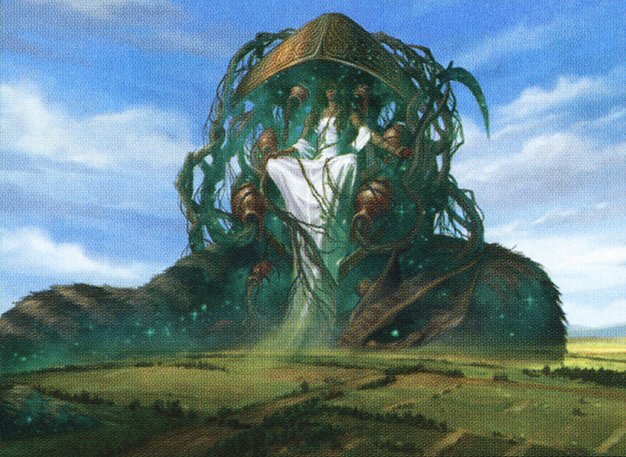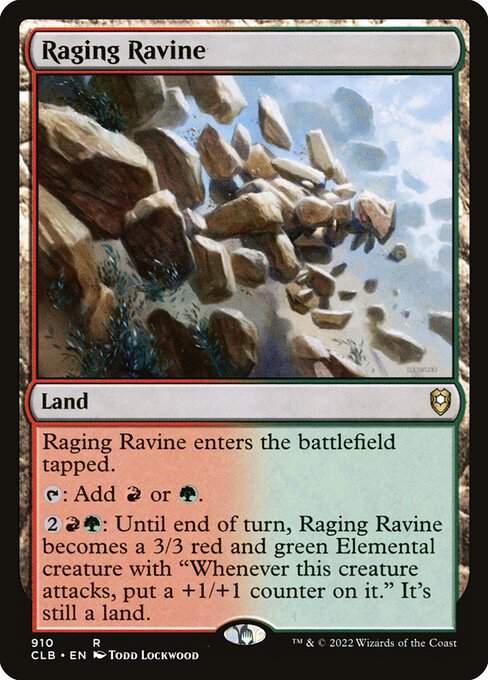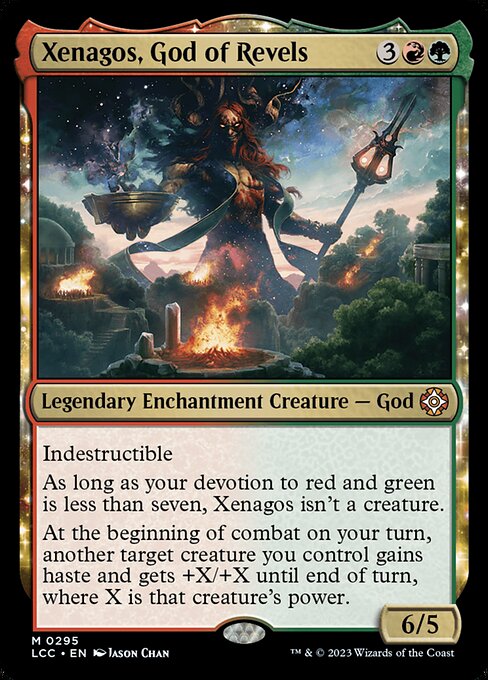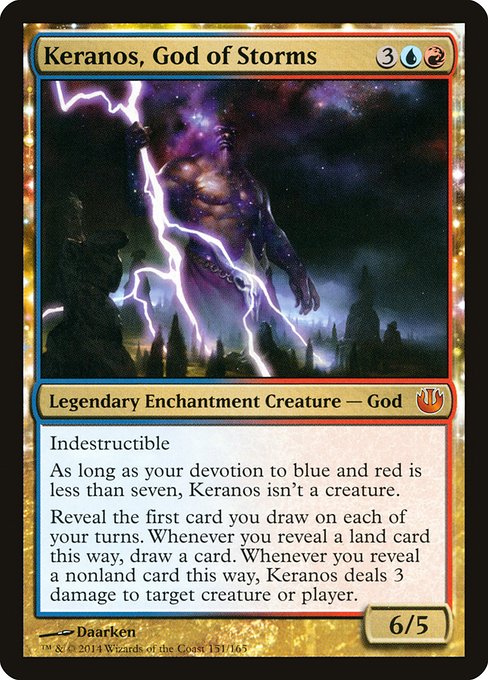Deck & Commander Strategies

Xenagos, God of Revels
Boost large creatures with haste and power pumps to quickly deal lethal combat damage.

Keranos, God of Storms
Cast multiple cheap spells in one turn to trigger storm effects, dealing damage and drawing cards to control the board and finish opponents.

Phenax, God of Deception
Tap creatures to mill opponents' libraries, depleting their cards while maintaining board presence.

Karametra, God of Harvests
Ramp aggressively by fetching lands whenever creatures are cast to build a dominant board state.
Gameplay Insights
- 1
Using Isocron Scepter imprinted with Mystic Tutor allowed repeated tutoring for critical spells, accelerating the storm player's combo turns.
- 2
The ramp deck capitalized on Karametra’s land-fetching ability to quickly expand mana resources and pressure opponents.
- 3
Phenax’s mill ability applied slow but consistent pressure, forcing opponents to balance between offense and defense.
- 4
Tracking storm counts carefully was essential for maximizing the effectiveness of the storm deck’s spells and combo potential.
- 5
Players leveraged the indestructibility and devotion mechanics of their gods to time their commander casts for maximum impact while minimizing vulnerability.
Notable Cards
-

Frantic Search
-

Raging Ravine
Gameplay Summary
The game featured four players piloting decks centered around powerful god commanders from the Born of the Gods and related sets, each representing different strategies.
The gameplay began with casual banter but quickly turned to a focus on each deck's unique game plan.
The green-white deck aimed to ramp aggressively using Karametra, God of Harvests, to accelerate land drops and build a strong board presence.
The blue-black Phenax deck leveraged mill strategies, tapping creatures to mill opponents’ libraries, steadily eroding their resources.
The red-green Xenagos deck utilized big creatures and haste boosts to apply pressure and close out games swiftly through combat damage.
Meanwhile, the blue-red Keranos deck aimed to chain multiple cheap spells to trigger storm mechanics and deal incremental damage while drawing cards, slowly gaining advantage. Early turns saw players developing their mana bases and setting up key pieces, with the storm deck player casting spells to build storm counts and utilize Isocron Scepter imprinted with Mystic Tutor for repeated value.
The mill and ramp decks focused on board development while trying to slow down opponents with tactical plays.
Key turning points included the storm player establishing combos and mana acceleration, the ramp deck rapidly expanding the battlefield with lands, and the mill deck pressuring libraries with Phenax’s ability.
The game’s tension rose as players tried to execute their win conditions while surviving aggressive board states.
The interplay of gods being indestructible and devotion mechanics added layers of strategic depth, influencing when and how commanders could be cast to maximize impact.




























![Commander VS S5E5: ??? vs ??? vs ??? vs ??? [MtG Multiplayer] thumbnail](https://i.ytimg.com/vi/IoN5gMmHpbg/sddefault.jpg)
![Commander VS S1E2: Keranos v. Marchesa v. Animar v. Ruric Thar [MTG Multiplayer] thumbnail](https://i.ytimg.com/vi/zQYgG45Yzuk/sddefault.jpg)













![Jhoira vs Gavi vs Animar vs Karametra [EDH/Commander, Magic The Gathering Gameplay] 2021 thumbnail](https://i.ytimg.com/vi/xPfeMJLmgr8/sddefault.jpg)
![Commander VS S6E7: Thada Adel vs Xenagos vs Seton vs Atraxa [MTG] thumbnail](https://i.ytimg.com/vi/YH_1i08V2a8/sddefault.jpg)
![Commander VS S3E9: Nekusar vs Karona vs Xenagos vs Kiki-Jiki [MTG: Multiplayer] thumbnail](https://i.ytimg.com/vi/meqwIXTAv34/sddefault.jpg)





